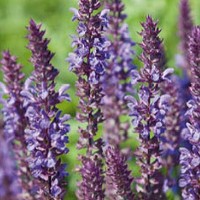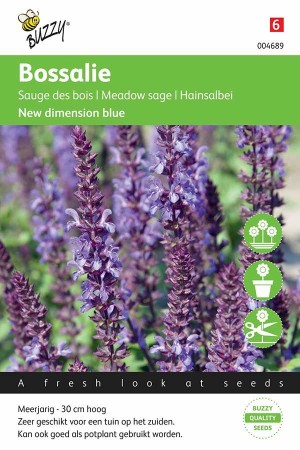Holiday notice: We are on holiday from 14 to 27 November.
Orders placed before 14 November 12:00 will still be shipped on Friday.
After that, shipping will resume from 28 November.
-
Flower seeds
- Vegetable seeds
-
Spices & herb seeds
-
Sow & Grow
-
Other
-
Organic seeds
-
Organic flower seeds
- Amaranth
- Anise Hyssop
- Argemony
- Bishops weed
- Californian Poppy
- Candytuft
- China Aster
- Chrysanthemum
- Clary Sage
- Coneflower
- Corn Cockle
- Cornflower
- Cosmos
- Cow Basil
- Dragon's Head
- Flax
- Flower mix
- Foxglove
- French Marigold
- Hibiscus
- Hollyhock
- Hound's Tongue
- Larkspur
- Lavatera
- Lavender
- Love in a mist
- Mallow
- Malope
- Mignonette
- Morning Glory
- Nasturtium
- Pansy
- Phacelia
- Poppy
- Pot Marigold
- Quinoa
- Safflower
- Shasta daisy
- Snapdragon
- Sunflower
- Sweet Pea
- Sweet William
- Sweet-scented Marigold
- Tickseed
- Wild Teasel
- Zinnia
- Organic herb seeds
- Organic sprouting seeds
-
Organic vegetable seeds
- Asparagus Lettuce
- Beans and peas
- Beetroot
- Bok choy
- Brussels sprouts
- Bunching Onion
- Burdock
- Calabrese
- Cape Gooseberry
- Cardoon
- Carrots
- Cauliflower
- Celeriac
- Celery
- Chicory
- Chicory
- Chinese cabbage
- Cress
- Cucumber
- Curly Kale
- Eggplant
- Endive
- Finocchio fennel
- Garden Orache
- Garden turnip
- Gherkin
- Green chicory
- Greens
- Kohlrabi
- Leaf mustard
- Leek
- Lettuce
- Melon
- Onions
- Palm Tree Cabbage
- Parsnip
- Pepper
- Pointed cabbage
- Pumpkin - Squash
- Purslane
- Radicchio
- Radish
- Red cabbage
- Rocket
- Romanesco
- Rutabaga
- Savoy cabbage
- Scorzonera
- Spinach
- Summer Squash
- Sweet Corn
- Sweet Pepper
- Swiss Chard
- Tatsoi
- Tomato
- Watercress
- White cabbage
- Winter Radish
-
Organic flower seeds
- SALE
- ✔ Low season: shipped within 1-2 business days
- ✔ More than 2000 types of seeds
- ✔ Shipping within the EU
- Flower seeds
-
- African Daisy (Dimorphotheca)
- African Daisy (Osteospermum)
- Agastache
- Alyssum (Lobularia)
- Amberboa
- Asarina (snapdragon)
- Aster (Callistephus)
- Aster Alpinus
- Aubrietia
- Azalea - Zomerazalea (Godetia)
- Baby Blue Eyes (Nemophila Insignis)
- Baby's Breath (Gypsophila)
- Bear's breech
- Bee Food (Phacelia)
- Begonia
- Bells of Ireland (Molucella Laevis)
- Black eyed Susan (Thunbergia)
- Blanket Flower (Gaillardia)
- Blue Pimpernel (Anagallis)
- Busy Lizzie (Impatiens)
- Cactus
- Californian Poppy (Eschscholtzia)
- Callistemon
- Canterburry Bells
- Cape Daisy (Arctotis)
- Castor Oil Plant (Ricinus Communis)
- Celosia
- Chinese Lantern (Physalis)
- Chrysantemum
- Cinquefoil (Potentilla)
- Clarkia
- Clematis
- Coleus (Solenostemon )
- Columbine (Aquilegia)
- Coneflower (Echinacea Rudbeckia)
- Corn Cockle
- Cornflower (Centaurea)
- Cosmea (Cosmos)
- Cow Basil (Vaccaria)
- Cup and Saucer Vine (Cobaea)
- Cup Flower
- Dahlia
- Daisy (Chrysanthemum leucanthemum)
- Datura
- Dusty Miller (Jacobaea)
- Dyer's Rocket (Reseda)
- Euphorbia
- Fijnstraal (Erigeron)
- Flax (Linum)
- Floss Flower (Ageratum)
- Flower-of-an-hour (Hibiscus)
- Forget-me-not (Myosotis)
- Four o'clock (Mirabilis)
- Foxglove (Digitalis)
- Gaura
- Giant rhubarbs (Gunnera)
- Gilia
- Globe Amaranth (Gomphrena)
- Globe Flower
- Globe Thistle (Echinops)
- Great Mullein (Verbascum)
- Greenthread (Cosmidium)
- Hollyhock (Alcea Rosea)
- Honesty (Lunaria)
- Houseplants
- Knotweeds (Persicaria)
- Larkspur (Delphinium/Consolida)
- Lavender
- Lisianthus (Eustoma)
- Livingstone Daisy (Dorotheanthus)
- Lobelia
- Love Lies Bleeding (Amaranthus)
- Love-in-a-mist (Nigella)
- Love-in-a-Puff (Cardiospermum)
- Lupine (Lupinus)
- Mallow
- Mallow (Lavatera)
- Malope Trifida
- Maltese Cross (Lychnis)
- Marigold (Calendula)
- Marigold (Tagetes)
- Meconopsis
- Meisjes Ogen (Coreopsis)
- Mexican Hat (Ratibida)
- Mimosa
- Mixtures of flowerseeds
- Monarda
- Monkey Flower (Mimulus)
- Monkshood (Aconitum)
- Morning Glory (Ipomoea/Convolvulus)
- Nasturtium (Tropaeolum)
- Nemesia
- Ornamental Cabbage
- Ornamental Corn
- Ornamental Gourds
- Ornamental grass
- Other flowerseeds
- Pancy (Viola)
- Pasque Flower (Pulsatilla)
- Passion Flower (Passiflora)
- Pelargonium (Geranium)
- Penstemon
- Petunia
- Pheasant's Eye (Adonis)
- Pinks (Dianthus)
- Poor Man's Orchids (Schizanthus)
- Poppy (Papaver)
- Portulaca
- Red Hot Poker (Kniphofia)
- Reseda
- Rhodochiton
- Rock Cress Candytuft (Arabis/Iberis)
- Rock Rose
- Rock Saopwort (Saponaria)
- Salpiglossis
- Salvia
- Salvia nemorosa
- Scabious
- Sea Holly (Ernyngium)
- Sea Lavender (Limonium)
- Shooting Stars (Dodecatheon)
- Silene
- Snapdragon (Antirrhinum)
- Speedwell (Veronica)
- Spider Flower (Cleome)
- Stock (Malcolmia Matthiola)
- Strawflower
- Strelitzia
- Sunflower (Helianthus)
- Sweet Peas (Lathyrus)
- Sweet Rocket (Hesperis)
- Sweet William (Dianthus)
- Tabacco (Nicotiana)
- Toad Lily (Tricyrtis)
- Toadflax (Linaria)
- Toothache plant (Spilanthes)
- Treasure Flower (Gazania)
- Vervain (Verbena)
- Viper's Bugloss (Echium)
- Vlambloem (Phlox)
- Wallflower (Erysimum)
- Wax Flower (Cerinthe)
- White Dill (Ammi)
- Wild Carrot (Daucus)
- Wild Indigo ((Baptisia)
- Wild Teasel (Dipsacus)
- Wisteria
- Yarrow (Achillea)
- Yellow Chamomile (Anthemis)
- Zinnia
expand_less
toon meer
expand_more
expand_less
toon minder
expand_more
Salvia nemorosa
Meadow sage is a hardy herbaceous perennial native to parts of Central Europe and Western Asia. A beautiful strong plant for flower borders. Salvia has a fairly long flowering time, from late spring to fall. After timely pruning back the dead stems, a second bloom will follow.
Salvia nemorosa is also called Meadow sage, is found in wooded areas, but also thrives on roadsides or open fields. The flowers of the Salvia are very attractive to bees and butterflies.
Meadow sage can be combined well with; Pigeon Herb (Scabious), Vervain (Verbena), Yellow Coneflower (Rudbeckia), Tickseed (Coreopsis) and the annual papaver (Eschscholzia californica).
meer info

Salvia nemorosa
There is 1 product.
Showing 1-1 of 1 item(s)

